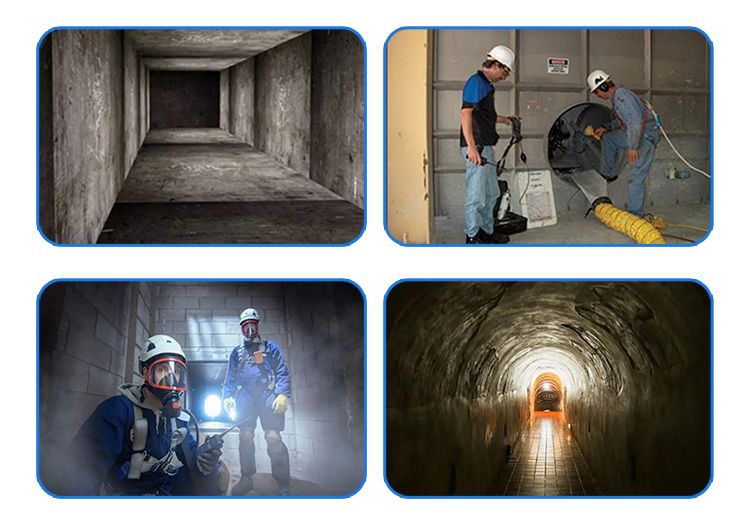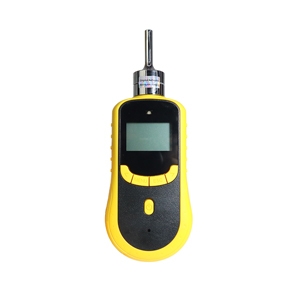In today's industrial and living environment, the existence of confined spaces can be seen everywhere, confined spaces are characterized by limited entry and exit points, limited gas diffusion, and easy accumulation of toxic or combustible gases, posing a serious threat to workers' safety and health. The multi-gas detector can continuously analyze the composition of gases in confined spaces, including Carbon Monoxide, Hydrogen Sulfide, Oxygen, and combustible gases. When the concentration of the detected gas exceeds the safety threshold, the detector triggers an alarm to remind workers to evacuate immediately or take necessary precautions. The gas detector systems can ensure the safety of staff entering confined spaces and avoid economic losses.
Types of Confined Space
- Enclosed and semi-enclosed equipment: Cabins, storage tanks, reaction towers, refrigerated trucks, caissons and boilers, pressure vessels, floats, pipelines, tankers, etc.
- Underground confined space: Underground pipelines, underground warehouses, underground fortifications, culverts, tunnels, culverts, pits, mines, waste wells, cellars, biogas tanks and septic tanks, sewers, ditches, wells, construction piles, underground cable trenches, etc.
- Above-ground confined spaces: Toilets, storerooms, wine tanks, fermentation tanks, waste stations, greenhouses, granaries, flues, etc.

Common Hazardous Gases in Confined Spaces
Atmospheric hazards can vary depending on the industry, materials used, and the confined space. Below is a table listing some of the most common gases found in confined spaces and their associated risks:
| Gas | Hazard |
| Oxygen (O2) | Deficiency (<19.5%) can cause unconsciousness or death; enrichment (>23.5%) increases fire risk. |
| Carbon Monoxide (CO) | Colorless, odorless gas; interferes with Oxygen transport in blood; deadly at high levels. |
| Hydrogen Sulfide (H2S) | Toxic gas even at low concentrations, smells like rotten eggs; it can paralyze the sense of smell. |
| Methane (CH4) | Flammable gas can displace Oxygen and create an explosion risk. |
| Carbon Dioxide (CO2) | It can accumulate in low-lying areas, displace oxygen, and cause dizziness or death. |
| Volatile Organic Compounds (VOCs) | Toxic vapors from solvents or fuels cause long-term health effects. |
| Ammonia (NH3) | Irritating eyes, skin, and lungs; toxic in high concentrations. |
| Nitrogen (N2) | Inert gases displace, leading to suffocation. |
These gases may come from decomposing organic material, chemical processes, residual materials, or the body’s respiration in a sealed space.
Why Need Gas Detectors in Confined Spaces?
Gas detection in confined spaces is a critical safety measure to prevent accidents and protect the health of workers who need to enter such spaces. Confined spaces are areas with limited entry and exit points, inadequate ventilation, and the potential for hazardous substances, including gases, to accumulate. Common examples of confined spaces include storage tanks, pipelines, sewers, manholes, and underground utility vaults.
- Gas detector devices can monitor gas concentrations and environmental parameters in real time, providing instantaneous data and alerts to help people detect potential hazards early and take necessary measures.
- They can provide toxic gas concentration detection before staff enters the confined space, when the equipment shows that the toxic gas concentration exceeds the safe operating range, it will promptly issue an audible and visual alarm, reminding the operator to take good protection and ventilation measures.
- Multi gas monitors are capable of detecting many different types of gases, including hazardous gases, combustible gases, toxic gases, etc., providing comprehensive monitoring capabilities.
- They typically have high sensitivity and can detect the presence of gases at low concentrations, allowing for better identification of potential risks. This is important for detecting leaks of toxic gases.
- Gas Dog gas monitor devices can also record and store historical data on gas concentrations. This helps to analyze and evaluate trends in gas concentrations afterward, as well as to monitor workplace safety and environmental monitoring.
Recommended GasDog Portable Gas Detectors
GasDog gas detectors are designed for use in confined spaces, industrial environments, and general safety monitoring. The range includes both multi gas detectors and portable gas detectors to meet diverse detection needs. These devices offer reliable, real-time monitoring of hazardous gases to help protect workers, ensure regulatory compliance, and prevent accidents in high-risk settings.
4 Gas Multi Gas Detector
The recommended Gas Dog multi-gas detector is a portable gas detector (4 gas) with a high-quality gas sensor, sound alarm and IECEX, ATEX explosion-proof certification. It is the first choice for personnel entering confined spaces, and continuously monitors the presence of four gases in a confined space simultaneously:
- Carbon Monoxide (CO)
- Hydrogen Sulfide (H2S)
- Oxygen (O2)
- Flammable gas
Portable Single Gas Detectors
We are committed to providing top-tier gas detection products that offer real-time monitoring, accurate readings, and dependable performance. They are designed to effectively identify and alert you to hazardous conditions, giving you the peace of mind you need when working in confined spaces. Visit GasDog.com today to explore more gas detector selections now.

